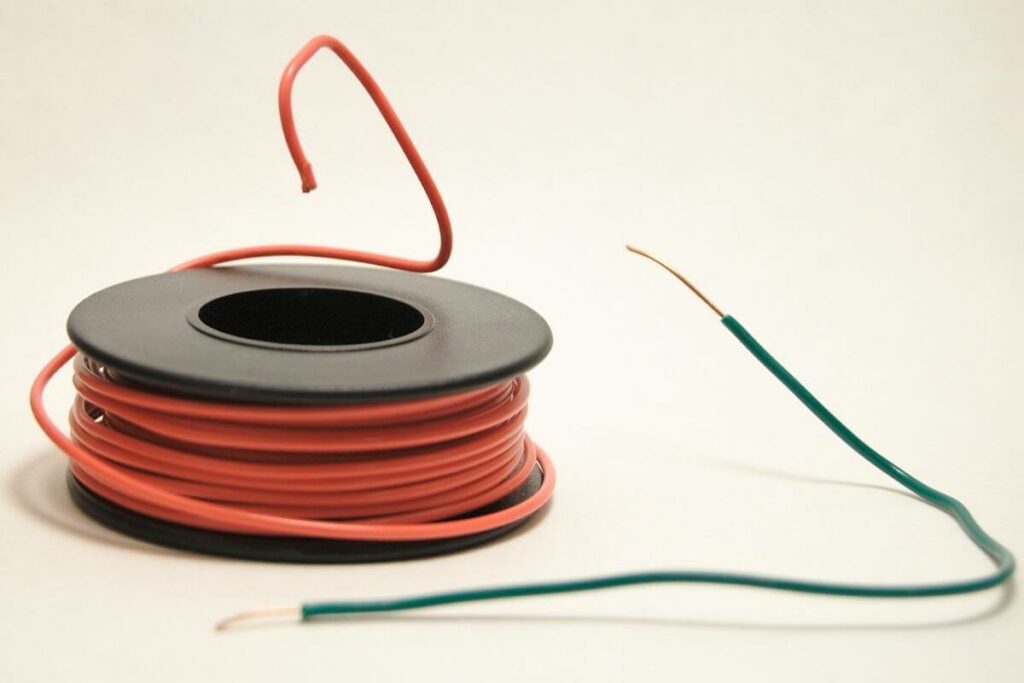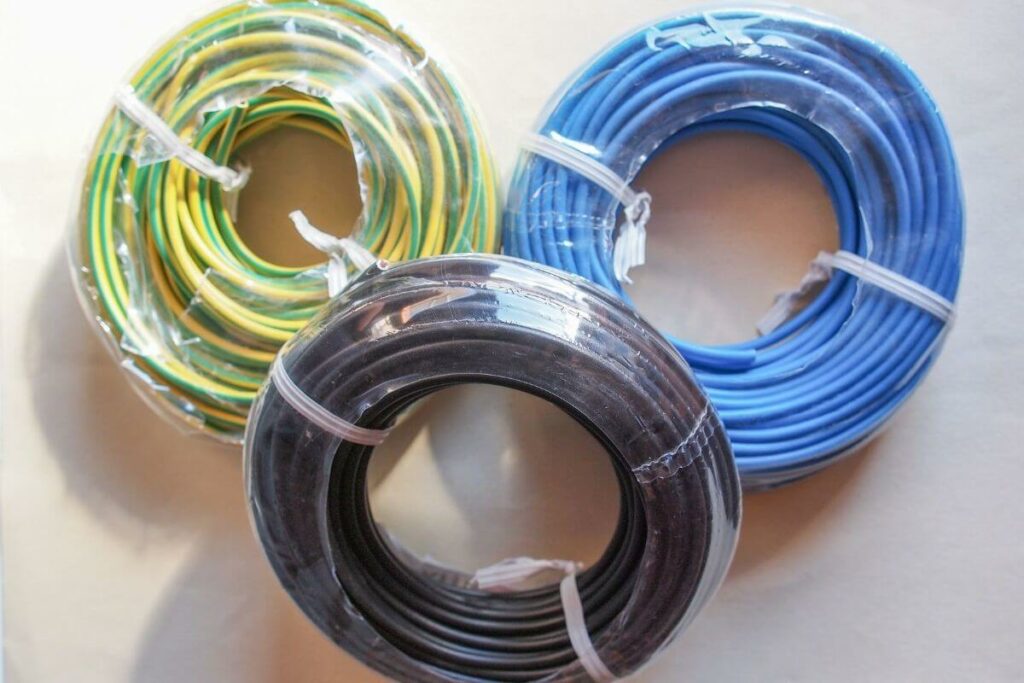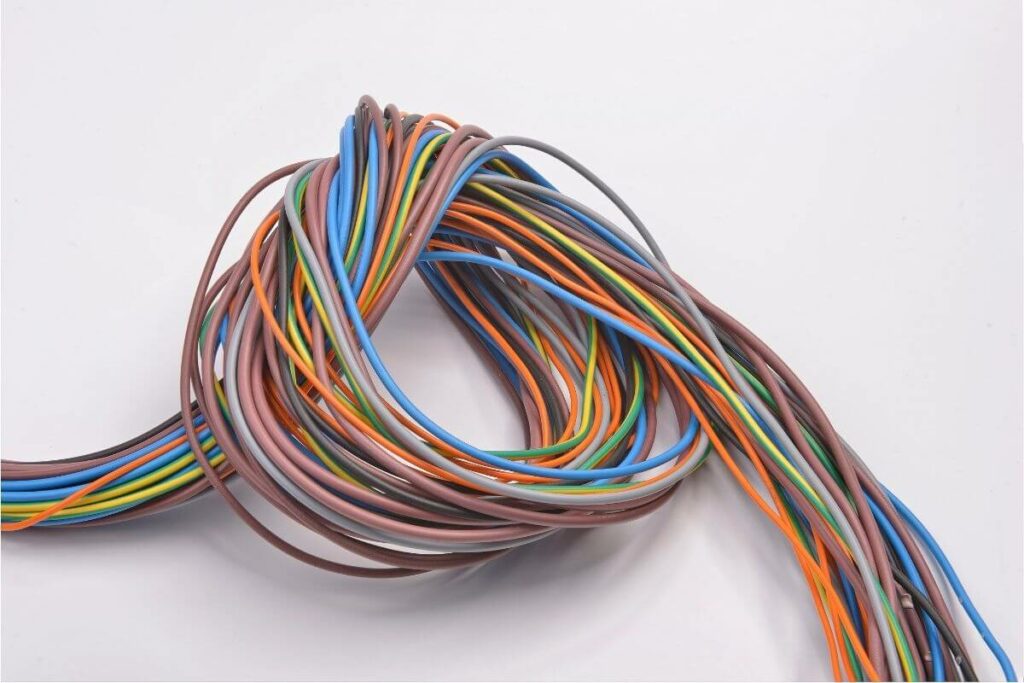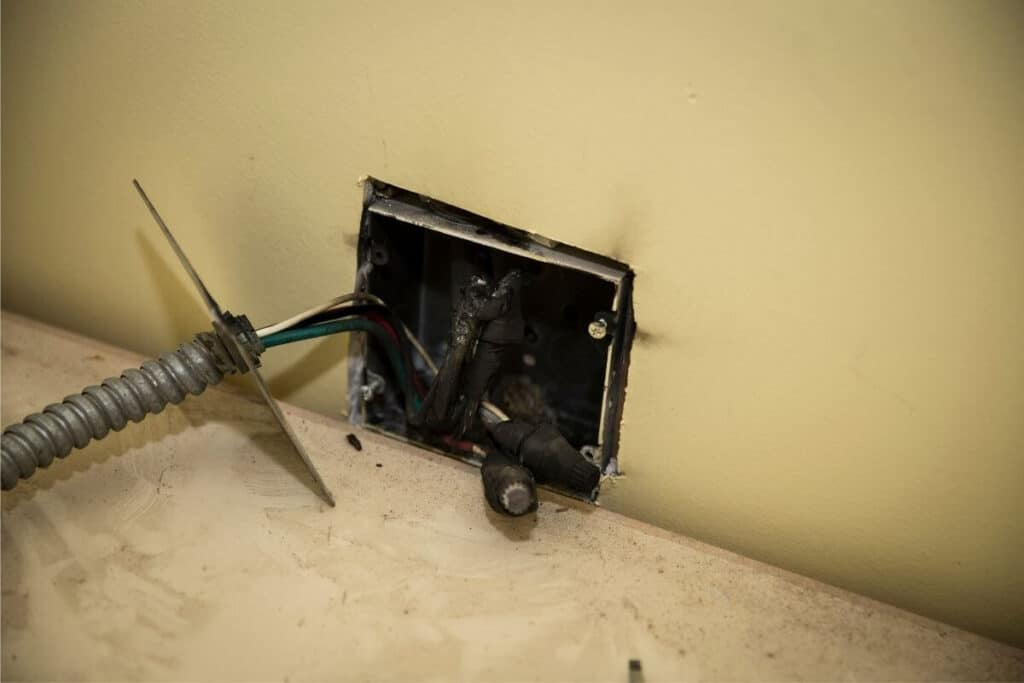What Size Wire For 30 Amps 200 Feet
Choosing the right wire size is a matter of cruciality. It is essential non merely for safety reasons but besides for the proper functioning of the entire electrical setup.
The correct wire size for a circuit or a basis-run depends mainly on the electrical load information technology intends to deport and the distance it is to run over. And so, what size of wire practise you lot need for 30 amps, 200 anxiety?
A 4 AWG wire is ideal for conducting 30 amps of current over 200 feet. You might fifty-fifty opt for a 3 AWG wire if you wish because the more than influential the diameter, the more amount of electricity Information technology can convey. Nonetheless, some people would contend that a 10 AWG copper wire is the minimum diameter for 200 feet run, and a 4 AWG wire is the maximum diameter length.
What Gauge Wire Exercise I Need for 200 feet?

If copper is the wire fabric, you tin can use a wire of 4 AWG. However, if aluminum happens to be the wire cloth, a wire of 300 Kcmil works best.
In the long run of 200 feet, you must consider the wire diameter. Underground cable runs are more than complicated and require thicker wires and more feel during installation than the normal household wiring.
The wire material used in a 200 feet run too helps to determine the most appropriate wire guess. Copper and aluminum are the nearly mutual conductors used to make electrical wires.
Aluminum is relatively cheaper than copper and is a good conductor, only copper remains the best option for condom, stability, and durability.
When it comes to cloak-and-dagger wiring, aluminum may non be your all-time choice. It contains highly reactive particles with earth's chemicals, which tin can cause it to erode speedily.
Aside from this, aluminum is costly when exposed to rut. Still, it can final underground too close to a hundred years when adequately coated and bonded.
As much as a four AWG wire is ideal for a 200 feet cablevision run, you tin can use a big wire in its stead.
This would help reduce the voltage drop and amend your equipment's efficiency. It also offers y'all the opportunity to increase the amperage later, if you so desire.
How Far Can You Run a 10 Gauge Wire for xxx amps?

Y'all can run a ten gauge wire for thirty amps as far as 128 feet and no more. Farther distances would require thicker wires.
A 10 guess wire is 102 inches thick and is only meant for short runs on minimal amperage.
You can utilize a ten gauge wire on a 20 amp circuit if it exceeds the 128 anxiety distance. For instance, a x guess copper wire would go further than a ten gauge aluminum wire.
Most people employ copper for their home wiring, particularly if they intend to have heavyweight appliances.
This is because aluminum, when imposed with a massive load, tin use a threat of electrical burn down.
In addition, A 30 amps circuit tin supply upwards to 3000 watts of electric current and can power most heavyweight appliances, eastward.g., the toaster, coffee maker, air conditioner, dehumidifier, microwave, hairdryer, to mention but a few.
Although 128 feet is the maximum a ten gauge wire can run on 30 amps, it works best inside 100 anxiety. The farther the altitude, the less load or should be made to carry.
What Would Happen If I Employ A Smaller Wire?

When information technology comes to wires, the thicker, the ameliorate, at that place'due south no downside to a thick wire at all, except that information technology is more expensive than the thinner ones. Nevertheless, the apply matches the price.
Bigger wires are designed to handle the maximum current. On the other manus, smaller wires quickly show signs of strain when they run into massive loads.
Choosing the right wire size requires much care and experience. This chore should be left for professionals to deal with.
Many hazards could emanate from improper wire size or installation; some include:
#1. Fire outbreak
Thin wires pose a loftier threat of starting electrical fires that screw out of command and raze downwards the entire building.
Circuit breakers may not curb these fires due to the massive strain and overload.
An explosion may even occur (although it rarely does). A burn down outbreak is the worst possible result of using thin wires.
#2. Melting

The heavy current generates a high amount of oestrus which outweighs the tolerance capacities of thin wires. The generated heat will, in due time, cause the wires to cook.
#three. Tin can Wreck Appliances
These wires can crusade amercement to the appliances being powered by the xxx amp excursion.
When the appliance does not become sufficient electricity, information technology affects their functioning, and eventually, they would get damaged entirely.
#four. Voltage driblet
Massive load on thin wires will overpower information technology and crusade a voltage drop that tin can damage the entire setting. Unfortunately, a voltage drop is a common occurrence.
Nevertheless, when the electric current drops more than 4%, it is an eminent sign of a fault from the wiring.
#five. Wear and Tear
The strain caused past the excessive flow of electric current can lead to the vesture and tear of the wires. If exposed, these wires pose many threats, from electrical shocks to fire outbreaks.
Both copper and aluminum wires are susceptible to wearable and tear due to thinness. However, aluminum may be more than prone due to its lightweight dress.
How Practice I Determine The Right Wire Gauge?
The approximate of a wire connotes its thickness and diameter. In addition, it helps in deducing the corporeality of current the wire can bear.
The American Wire Guess (AWG) is a system of numbers that denote the different wire sizes. Each estimate size has a 26% difference from the next.
The college the approximate size, the smaller the wire. This is to say that a wire of six AWG is more meaning than a 10 AWG wire.
The more the amperage, the thicker the wire; more current will crave thicker and bigger wires.
A 10 gauge wire is suitable for xxx amps. A 40 gauge amp would need a thicker wire of 8 AWG to handle its current. Sixty amps would require a 4 AWG wire.
Minimal wind such equally twenty amps can do with a 12 AWG wire. The distance to be run also plays a role in determining the right wire guess.
Long runs require thicker wires to carry electricity menstruation over long distances efficiently. Copper wires convey more electric current than aluminum, making them the best option for long-run wiring.
While information technology is possible to decide and correctly connect all your wires effectively, information technology is advisable to seek trained assistance to avert complications that may arise due to a corrigendum or misstep on your part.
Conclusion
Wires come in different sizes, and each of these sizes best serves a different purpose from the other.
Earlier choosing the correct wire size, calculations have to be made on the total electrical load it intends to deport.
A 200 feet distance is a long run and, as such, would require a wire of adequate thickness. A 4 AWG wire best fits this altitude.
Copper wires should remain your all-time option for long-run wiring as aluminum wires, though cheap, come with many complications.
Thinner wires are best for curt runs and lightweight applications. On the other mitt, Thick wires are best for long runs and heavyweight applications.
Sources:
https://en.wikipedia.org/wiki/Circular_mil
https://en.wikipedia.org/wiki/American_wire_gauge
What Size Wire For 30 Amps 200 Feet,
Source: https://homeguideinfo.com/what-size-wire-30-amps-200-feet/#:~:text=A%204%20AWG%20wire%20is,of%20electricity%20It%20can%20convey.
Posted by: destefanothroureept.blogspot.com


0 Response to "What Size Wire For 30 Amps 200 Feet"
Post a Comment